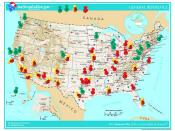SUSTAINABILITY WITHIN THE QUANTITY SURVEYING PROFESSION
There is a growing realisation of 'systems thinking' and 'sustainability' amongst professions, and as a student of the Built Environment and Engineering Faculty at QUT, my discipline of Quantity Surveying has the potential to shape professional practice in the development and construction industry. This discipline drives my ability to face challenging situations, growing interest in the construction industry and ambition to achieve a rewarding career in the future. These professionals work in all sectors of the construction industry, through feasibility, design, construction and maintenance of a facility and can be defined as the cost managers of construction (Mcgarry Associates, 2010). A Quantity Surveyor must be aware of the various ways in which development and construction can impact on the economic, environmental and social interests of the public (Royal Institution of Chartered Surveyors, 2007). To discuss the role my profession has played on developments, I will evaluate the positive and negative contributions to the 'triple bottom line' of stakeholders, using examples observed along the sustainability walk.
The Goodwill Bridge is a pedestrian and cyclist bridge, where my profession has contributed to a negative economic impact on the 'triple bottom line' of stakeholders. The bridge was cost co-ordinated by Arup Services in 2000, the projected cost was to be $13 million, however when completed in 2001 the final bill exceeded $30 million, with the excess costs having to be paid in government funds (Courier mail, 2009). This budgetary blowout was thought to be due to an unorthodox design and delays in construction (2009). Accountable for managing and controlling costs during the construction process, the Quantity Surveyor must investigate the feasibility of a planned development, preparing expenditure documentation to access any unnecessary risks involved within the construction process. Despite the exceeding costs involved with the construction of...


